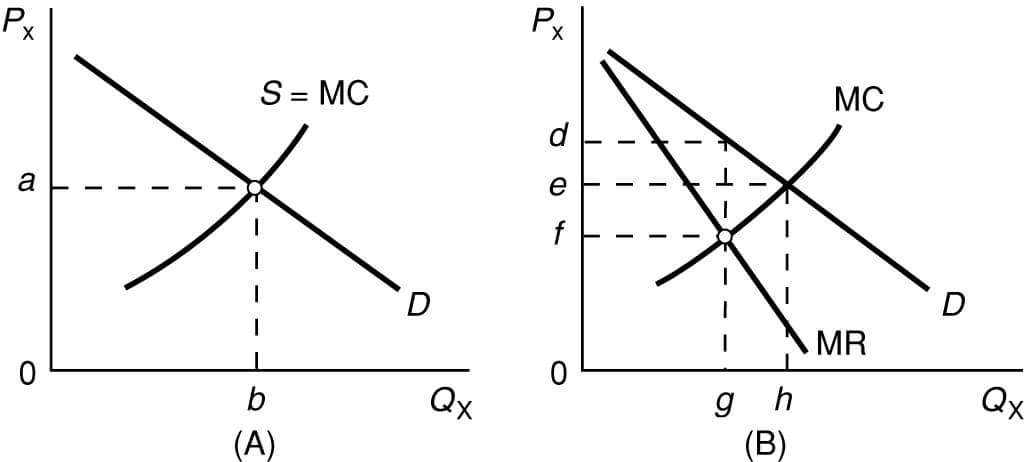ECON 203 Part II
Part II: Very short answer. Each numbered question or lettered sub-question is worth the same amount as a multiple choice question or explanation.
Refer to the diagram below for questions 9-12 (continued on the next page.) This diagram represents the cost structure for a single perfectly competitive firm.

15. A) At a price of P3, what quantity will the firm produce? Why?
B) Are they making a profit?
C) What will happen in the long run?
16. A) At a price of P3, what quantity will the firm produce? Why?
B) Are they making a profit?
C) What will happen in the long run?
Use the diagram below represents a portion of the cost and revenue structure of an individual firm. Us this to answer question 23.

- A) What is the firm’s optimal output quantity (g or h)?
- How does it decide to produce this amount?
- At what price (d, e or f) will the firm sell its product?
- Is this a competitive market? Explain.
Use the following data from a small entrepreneurial manufacturing firm to answer questions 24-26.
Entrepreneur’s potential earnings as a salaried worker = $65,031
Annual lease on building = $34,082
Annual revenue from operations = $290,064
Payments to workers = $160,003
Utilities (electricity, water, disposal) costs = $8,097
Entrepreneur’s potential economic profit from the next best entrepreneurial activity = $80,106
Entrepreneur’s forgone interest on personal funds used to finance the business = $6,219
- What are the entrepreneur’s explicit costs?
- What are the entrepreneur’s implicit costs?
To access the complete answer towards the above assignment email: [email protected] or chat with us live.


